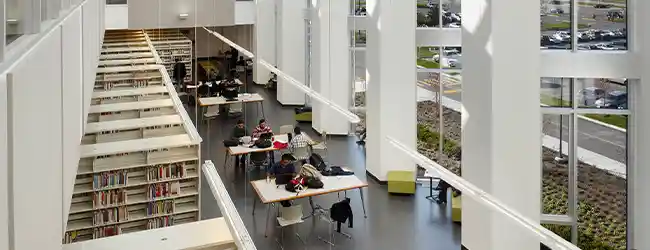
By Paul Shorthouse, Managing Director, Circular Economy Leadership Canada
We currently live in what has been termed a “linear” economy – where natural resources are extracted, turned into something of use, and then often discarded at the end of life. This linear model is the root cause of our triple environmental crises: global warming and climate change; biodiversity loss and ecosystem damage; and pollution. The linear model is also resulting in enormous lost economic opportunities from failing to recapture the value of the materials and resources at end of use.
The construction sector, in particular, is the largest consumer of raw materials and energy globally, and also the largest contributor to the global waste stream by weight. Approximately half of all extracted raw resources globally are used to make construction materials. The sector is also extremely wasteful at the moment, with up to 40 per cent of urban solid waste coming from construction and demolition. The greatest impact associated with the construction sector is the ongoing need for virgin resource extraction.
In Canada, construction is a very important economic sector, generating $141 billion in GDP in 2020. Similar to the global picture, however, the sector is also one of the most wasteful. In Canada, nearly 4 million tonnes of construction materials are sent to landfill annually, representing an estimated 1.8 million tonnes of embodied carbon.
Addressing the environmental issues and corresponding economic opportunities within Canada’s built environment sector can only be achieved by adopting circular economy approaches in construction and real estate management. The circular economy provides a framework and business strategies for moving away from the linear take-make-waste economy, allowing the full value of our materials and resources to be captured during their usage and at end of life. The circular economy model aims to:
The circular economy also allows us to reach our net zero climate targets by achieving deeper greenhouse gas (GHG) emission reductions, considering manufacturing processes and supply chain emissions (such as embodied carbon), as well as non-energy GHG emissions such as those from land use changes. For example, a recent report by the National Zero Waste Council found that 1.3 million tonnes of embodied carbon could be avoided per year if all buildings renovated or demolished in Canada were disassembled and reused.
Fundamentally, the circular economy is about designing out the concept of waste from products and services altogether – and, in this case, our built environment. From a circular economy perspective, we can think of waste in four different forms:
There are five well-established circular business strategies that look to capture the full value of resources. These are:

It is important to think of circular economy in the built environment as much broader than waste diversion and recycling – the opportunities span the entirety of both the value chain and the building life cycle. A circular building or infrastructure assets lifecycle starts with circular design, then product and material innovation and manufacturing (including offsite and modular construction), construction site best practices, asset use and operations (including long-term maintenance, repair, and adaptive reuse), and, finally, deconstruction and resource recovery.
The market potential for circular economy solutions in Canada is large and interest is growing. Many industry leaders are focusing on the design challenge of embedding circular building strategies into their practices and operations (find out more in our recent Circular Economy & the Built Environment Sector in Canada Report).
That being said, very little has been focused on more upstream circular strategies, such as circular inputs and product-as-a-service business strategies. Furthermore, there are significant system barriers and existing inertia that must be overcome. Some of the key barriers include:
To support a stronger business case and accelerate circularity in the built environment, we need to address the challenges and issues outlined above. The demand for circular solutions must increase across the entire value chain and, in particular, where important decisions are being made, including by real estate developers, building and asset owners, and architects, engineers, and designers. As such, it’s essential that the business case and value proposition for circularity is clearly articulated for these stakeholders for them to commit to incorporating circularity strategies and principles into their projects and building portfolios.
A focus on the key enablers can help to tackle the barriers, including:
At Circular Economy Leadership Canada (CELC), we’ve been investing in the circular economy opportunities for Canada’s built environment sector as part of our Circular Economy Solutions Series.
The CE Solutions Series uses a social innovation lab model to bring together stakeholders from across the value chain to tackle issues and advance the opportunities within the sector. Our multi-phased work stream on Built Environment goes beyond a focus on construction waste to encompass the entire building, infrastructure, and real estate ecosystem in Canada.
To find out more and get involved, please get in touch by emailing me at pshorthouse@circulareconomyleaders.ca. I also invite you to sign up for our monthly newsletter to stay informed on our latest research, upcoming events, and partnership opportunities (sign up here).
Join our mailing list